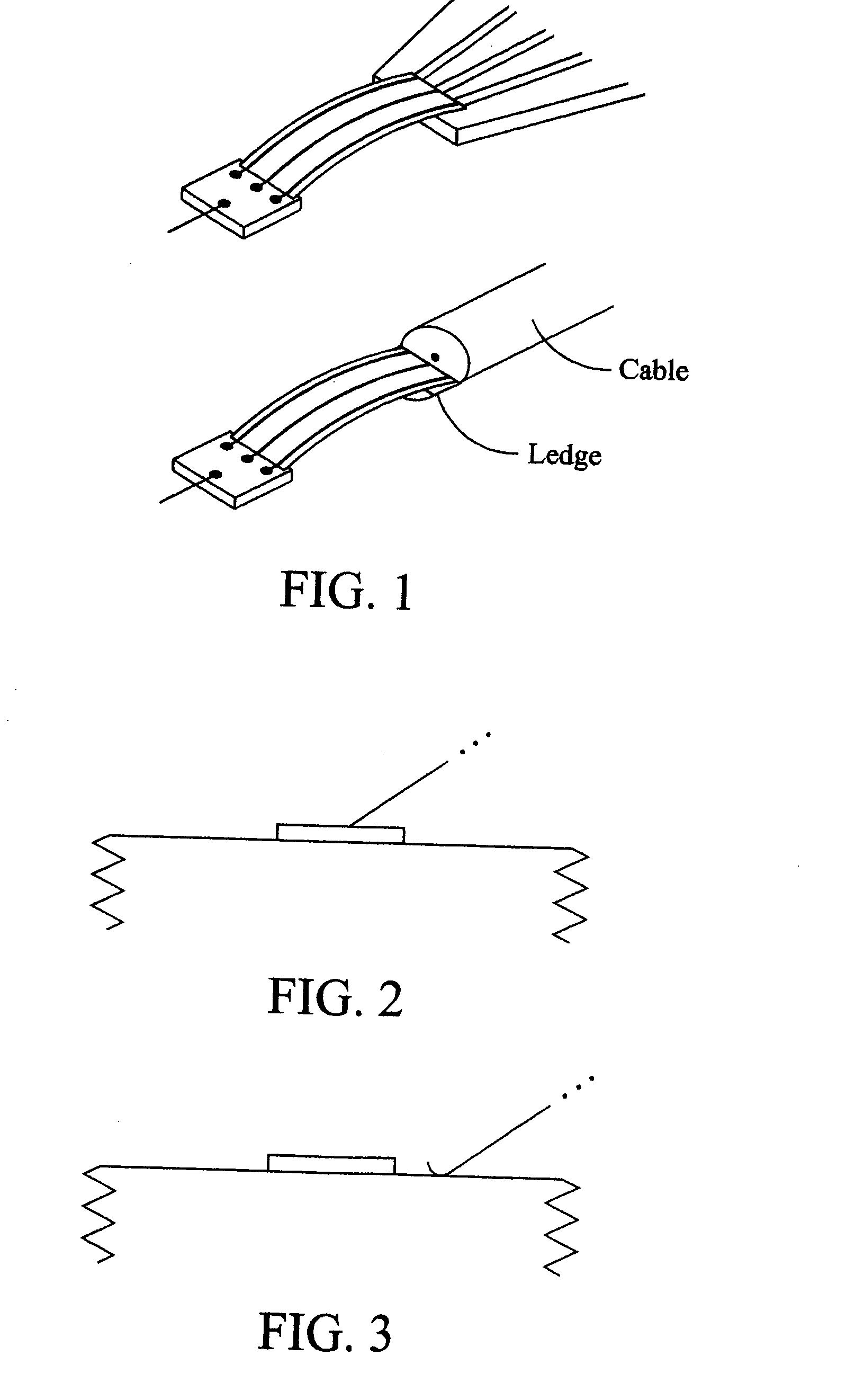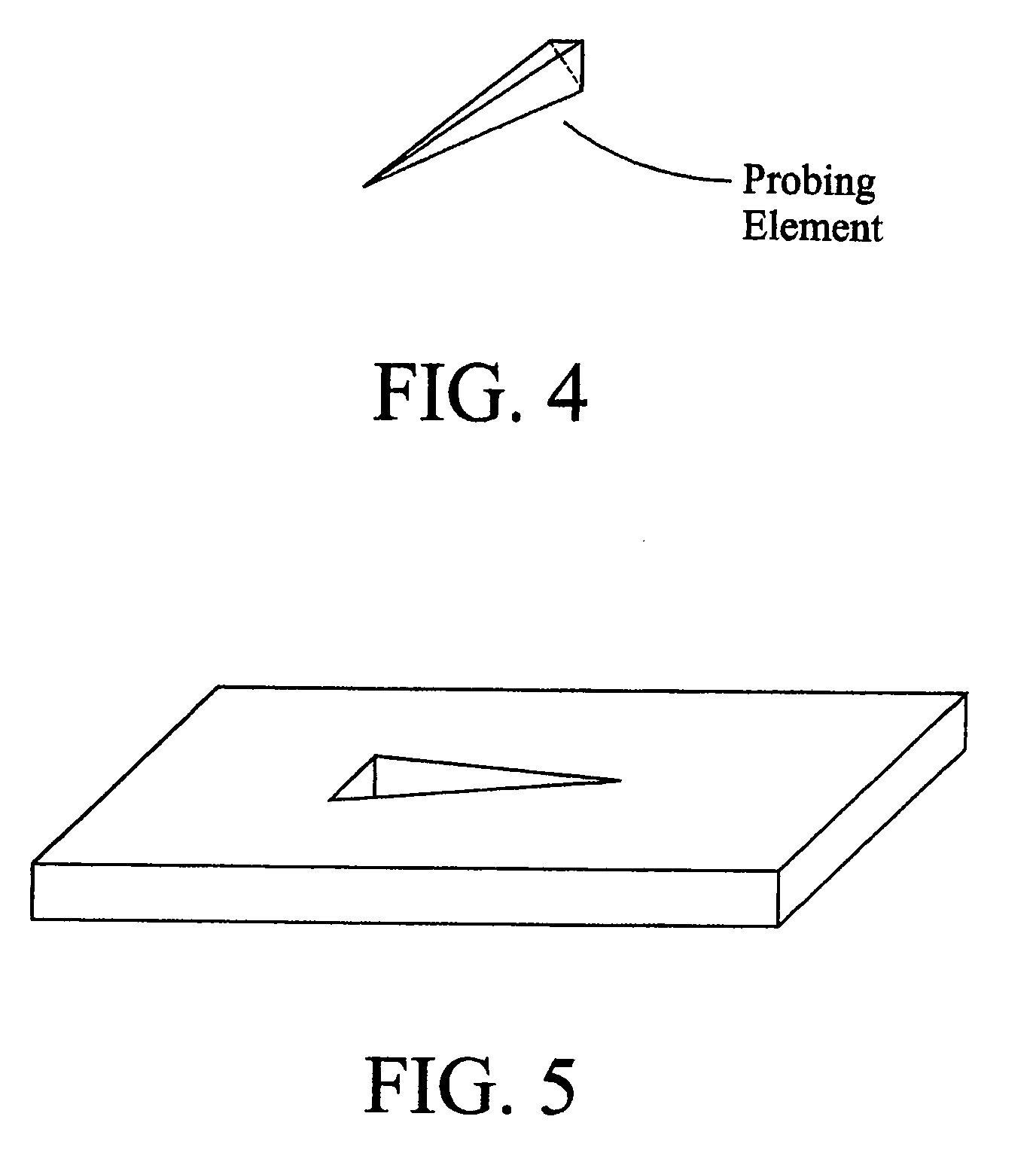Active wafer probe
- Summary
- Abstract
- Description
- Claims
- Application Information
AI Technical Summary
Benefits of technology
Problems solved by technology
Method used
Image
Examples
Embodiment Construction
[0030] Active element based probes, such as those which include a high input resistance and / or low input capacitance amplifier circuit, tend to be suitable for probing circuitry where the addition of a capacitance on the order of approximately 100 fF for devices that are exceptionally small does not present a significant load to the circuitry. Most amplifier circuits include external power using a bias circuit, while passive circuitry may potentially be used. However, in some circumstances the loading of a circuit with 100 fF is simply unacceptable for effective measurements. For example, in some cases an opening is machined on the back side of a wafer that includes circuitry thereon to permit access to a conductive trace interconnecting a pair of transistor elements together, such as a pair of gates. With the continual shrinking of the size of the gate of transistors, together with the decrease in the amount of current used for switching the transistors, the loading of the circuit ...
PUM
 Login to View More
Login to View More Abstract
Description
Claims
Application Information
 Login to View More
Login to View More - R&D
- Intellectual Property
- Life Sciences
- Materials
- Tech Scout
- Unparalleled Data Quality
- Higher Quality Content
- 60% Fewer Hallucinations
Browse by: Latest US Patents, China's latest patents, Technical Efficacy Thesaurus, Application Domain, Technology Topic, Popular Technical Reports.
© 2025 PatSnap. All rights reserved.Legal|Privacy policy|Modern Slavery Act Transparency Statement|Sitemap|About US| Contact US: help@patsnap.com



